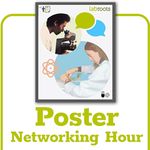Machine Learning to Infer and Control Brain State
Advances in neuroscience now make it possible to develop treatments for psychiatric disorders through targeted brain interventions. However, designing effective protocols requires careful consideration of many factors. We propose a method that identifies electrical dynamics across brain regions associated with illness states or behaviors and leverages these patterns to design precise intervention protocols. Specifically, we statistically model the brain’s electrical activity as a superposition of latent electome networks, functional connectomes that collectively define a “brain state” predictive of disease, behavior, or outcomes. These networks are interpretable through their spectral power and the directional relationships between brain regions, which in turn facilitates the design of testable intervention strategies.
We then use these techniques with case studies on both social aggression and anxiety. In an animal model of aggression, we identified an electome network linked to aggressive activity across multiple assays and developed a closed-loop intervention protocol that selectively reduces aggression while sparing pro-social behavior—a significant improvement over open-loop stimulation, which suppresses both. We also discuss our ongoing efforts to apply similar approaches to anxiety and conclude with continued methodological developments to better design and track the impact of interventions.
Learning Objectives:
1. Summarize how latent networks are extracted from brain electrical activity to define predictive brain state
2. Discuss the design and implementation of closed-loop intervention protocols that target specific psychiatric behaviors.
3.Evaluate the interpretability of these networks via spectral power and directional connectivity to inform testable intervention strategies.




